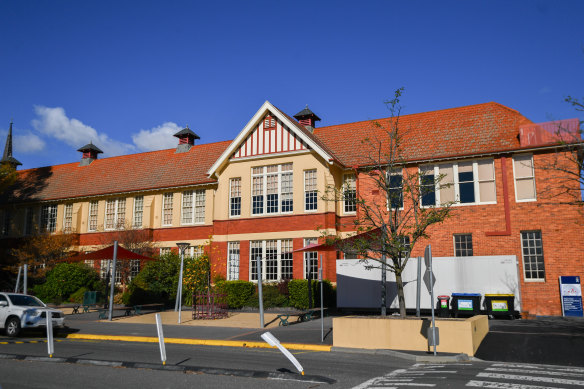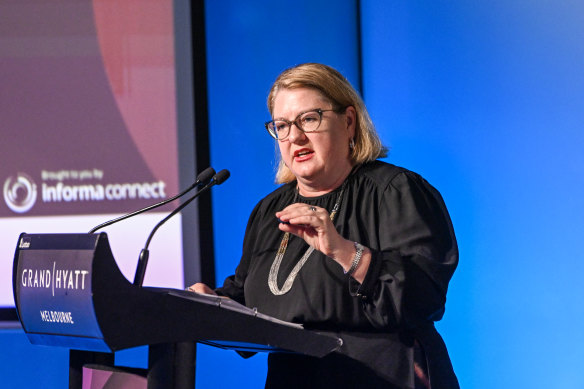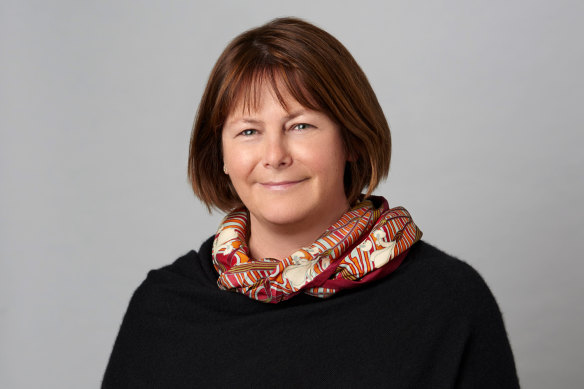By Nicole Precel and Robyn Grace
Victoria’s highest-fee schools, including Geelong Grammar, Haileybury and Scotch College, will face new payroll tax rules from next year, but the measure will raise $100 million less than expected after the government backtracked from its original plan following fierce opposition.
Sixty schools, or about 10 per cent of non-government schools, will pay the new tax – down from the 110 initially proposed. The government on Thursday set the threshold for the tax at schools earning $15,000 per student, which ended months of speculation from Catholic and independent schools.

Scotch College in Hawthorn.Credit: Joe Armao
Non-government schools say the measure will force them to cancel programs and hike fees.
Independent Schools Victoria said it wouldn’t rest until the tax was repealed, while the Catholic representative body dismissed the move as an “unprecedented, ad hoc and unfair” approach to school funding.
But Treasurer Tim Pallas said the levy would remain in place until 2029, and it was up to schools how they adapted their business.
“Whether or not this translates into higher fees for students will ultimately be a decision for the schools themselves,” Pallas said.
The government announced in May that the state’s highest-fee non-government schools would lose their tax exemption, and that schools earning more than $7500 per student were set to contribute $420 million to the state’s COVID debts.
The measure was originally set to affect 20 Catholic schools and 90 independent schools. The new threshold captures 54 independent schools and six Catholic schools.
Pallas said the $15,000 threshold would reduce the government’s predicted earnings by just over $100 million, or $35 million annually for the three-year forward estimates period.
He said the government always intended to consult with the sector, which had inevitably affected the threshold.
The assessment takes into account fees and charges that non-government schools levy on all families. Scholarships and financial relief reduce schools’ average fees.
Education Minister Natalie Hutchins said all schools were assessed by the same criteria and that the move brought some non-government schools in line with state schools, which were subject to payroll tax.
In total, more than 660 independent schools will remain exempt. New schools will be assessed against the $15,000 threshold, which will not be indexed.
The state government provides about $1 billion in funding for operating expenses to non-government schools each year, a figure that has grown by 8 per cent in real terms since 2014-15.
Key dates
- May 23: The government announces that about 110 of the state’s highest-fee private schools will lose their long-held exemption to payroll tax next year, netting the state more than $420 million in revenue over three years.
- May 30: The fee threshold is set at just above $8000, the same standard used to decide eligibility for the COVID-19 tutoring program, indexed for inflation.
- June 2: Treasury asks the Education Department to model lifting the exemption threshold to schools that charge more than $10,000 a student in annual fees.
- June 7: The Catholic Education Commission of Victoria urges families and principals to seek meetings with their local Labor MPs and forward letters of protest over the tax plans. The government indicates it could lift the threshold to as high as $13,000.
Independent Schools Victoria chief executive Michelle Green said the organisation wouldn’t rest until the “learning tax” was repealed.
Green said schools would need to decide if they cut educational programs and staff, or increased student fees to cover the cost.
“It will come as a financial shock to parents from a wide range of backgrounds who are already struggling with cost-of-living pressures,” she said.
Independent Schools Victoria calculations show 54 independent schools, with a combined intake of 63,123 students, would pay a combined $78.5 million in payroll tax, or about $1500 per student per year.
Green said parents at independent schools were being “milked as a source of government revenue”.
Catholic Education Commission of Victoria executive director Jim Miles said the threshold increase meant fewer families would be affected than originally proposed, but affected schools would assess what services, programs, and building plans would be cut – or if they increased fees.
Miles said some schools would pay more in payroll tax than they received in state recurrent grants. No other state nor the federal government had such a policy.
He said it was completely misleading to say the new tax would result in equal treatment of schools sectors, and called the move “unprecedented, ad hoc and unfair approach to school funding”.

Education Minister Natalie Hutchins says the new tax will bring non-government schools in line with state schools.Credit: Justin McManus
“We will continue to engage with the Victorian government to help ensure this measure is a short-term response and that schools’ funding policy is developed in a fair and consultative manner moving forward,” he said.
Whitefriars College principal Mark Murphy welcomed good news for his school in the short term, but was concerned about the future.
Fees for year 11 and 12 students at the Catholic boys school in Donvale currently sit at $14,934 a year. Even a slight increase in fees brought on by inflation could exceed the new threshold.
“This is still a flawed policy, none of our schools should be subject to the payroll tax,” Murphy said.

Independent Schools Victoria chief executive Michelle Green says the tax will come as a financial shock for parents.
“Our families are hard-working people who make great sacrifices to send their children to our school.
“This decision could put them under even greater pressure in the future at a time when cost-of-living pressures are already causing great challenges to families.”
The proposed threshold changed multiple times, as the Victorian government walked back its initial threshold of around $8000 to $10,000, then indicated it was open to raising the level even further.
The uncertainty over the threshold angered non-government schools, which said they would be forced to raise fees significantly or cut back on staff and programs to meet the new tax.
The change also means many private schools will, for the first time, pay two other levies on top of their new payroll tax obligation: the mental health levy that was introduced last year and a new temporary increase to payroll tax that was also announced in the budget.
The 2023-24 state budget promised $450 million over four years to continue the non-government schools capital fund, which supports new builds and upgrades at low-fee Catholic and independent schools. The funding builds on $522 million previously invested in non-government school infrastructure since 2015.
Opposition education spokesman Matthew Bach said the tax meant fees at independent and Catholic schools would increase by hundreds, and in some cases thousands, of dollars.
“Many people who send their children to schools with fees of $15,000 or more are working their socks off to be able to send their children to their school of choice,” Bach said.
He said he didn’t think the government should be pitting one group of parents and students against another.
“I’m a passionate believer for more funding for state schools. This huge additional tax will have to be passed onto parents,” he said.
“Many parents will leave, then of course go into the state system, which is already overwhelmed. I don’t think it’s right to tax aspiration and financial choice – the logical outcome is to put even more pressure onto state schools.”
De La Salle College principal Peter Houlihan was relieved his Catholic boys school was well below the threshold.
The Malvern school had projected it would have to be “creative” to find $850,000 to cover the tax if it wasn’t exempt.
De La Salle College’s senior school fees are about $13,100 a year, which increases each year between 1 and 3 per cent.
“It’s a massive relief. We were preparing for the worst, but waiting for the announcement,” Houlihan said.
“Our desired policy position is to keep fees as low as possible for Catholic families in Melbourne and not to have [them] make those hard decisions as to where that money would come from.”
Houlihan said he empathised with other schools that had to face the tax.
The Morning Edition newsletter is our guide to the day’s most important and interesting stories, analysis and insights. Sign up here.